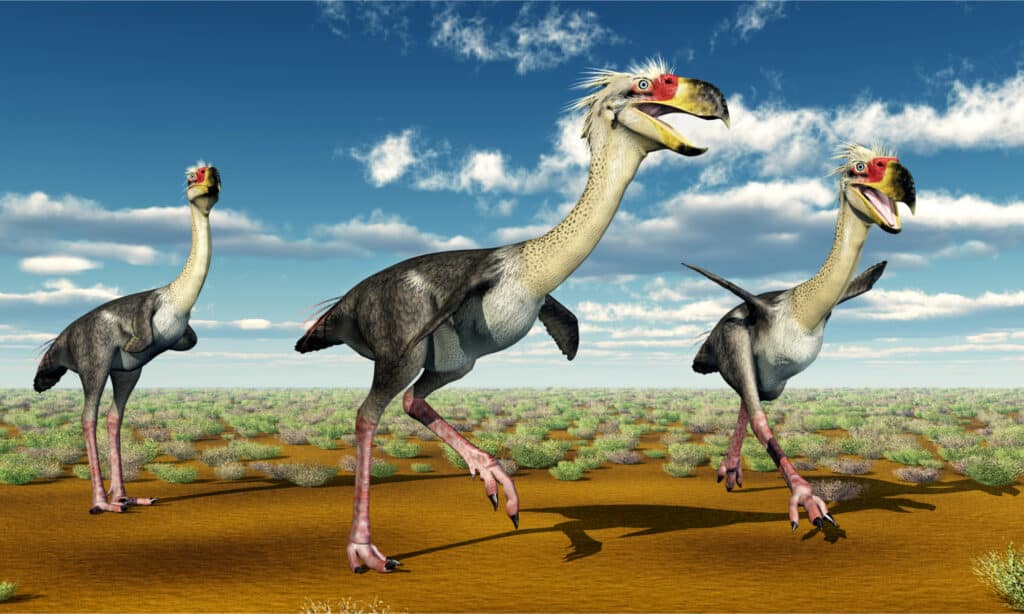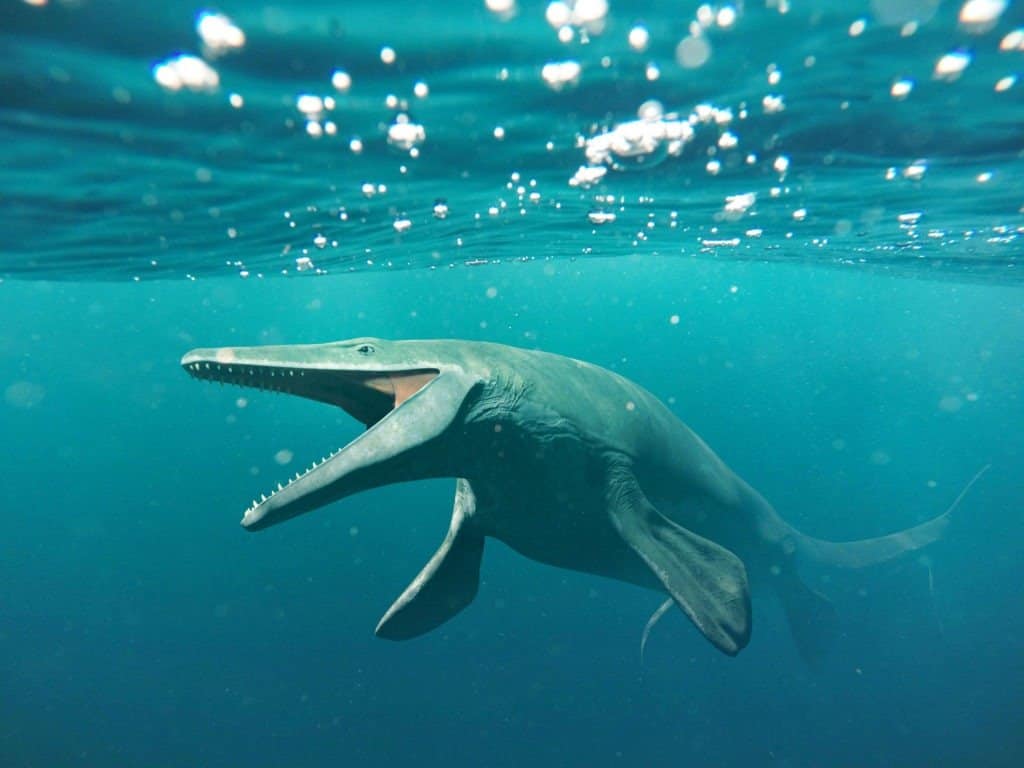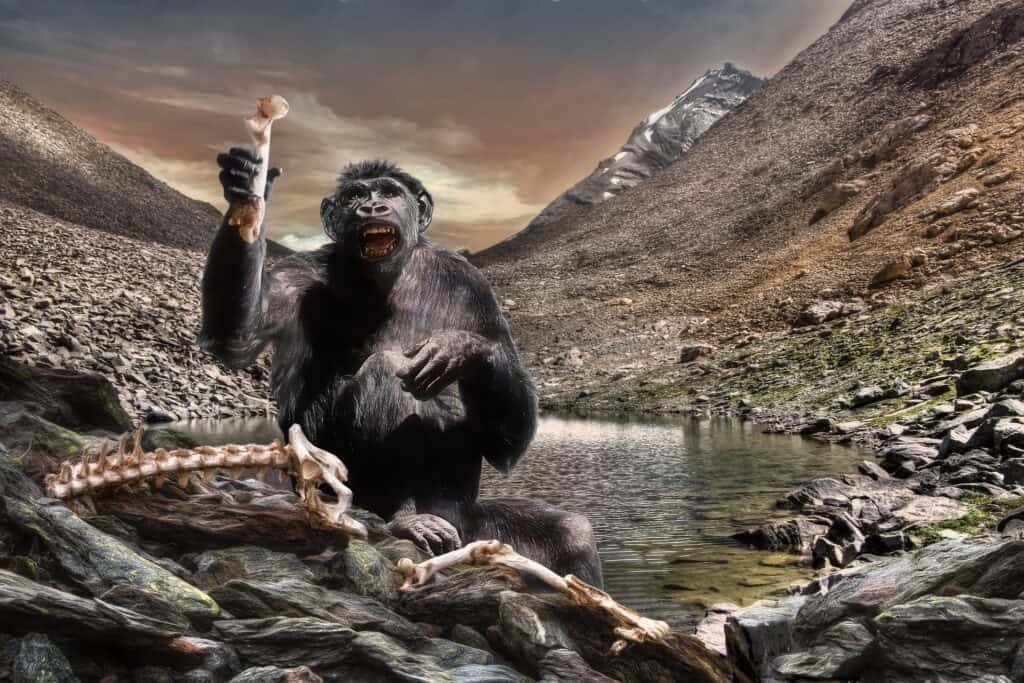Dinosaurs ruled the earth for millions of years. When they died off suddenly in a massive extinction event, they left a huge ecological void ready to be filled with new, or previously preyed upon species. However, the event that killed the dinosaurs didn’t just affect them. It also killed off a wide variety of other plant and animal life. The species that rose to fill these gaps reshaped the earth.
The Paleogene period lasted for 43 million years. This was an important time when animals were free to find different ecological niches after the dinosaurs died. It was the period that belonged to the Cenozoic Era. Its epochs that belonged to this period are the Paleocene, Eocene, and Oligocene.
What are the crucial things that happened during the Paleogene period? Let us review the following details and understand more about the animals, timeline, and major events during this period.
The Animals of the Paleogene Period
Primitive mammals were present during the Triassic period. But then, the dinosaurs preyed upon them. When the Paleogene period began, the mammals became free to thrive and spread out into many ecological niches. The ancestors of the modern hoofed animals, whales, and elephants lived during this period. These mammals were small at the beginning of the period, but they all grew to decent sizes by the Oligocene epoch.
The Paleogene period is when modern mammals started to develop. The extinction of the large reptiles gave other animals the chance to evolve. The latter part of the period was dominated by mammals. Most of the mammalian groups were already thriving by the Eocene epoch. When the large reptiles disappeared, mammals increased in numbers, diversity, and size. They explored and occupied the air, sea, and land territories.
The common modern mammals evolved during the Paleogene period. The Oligocene epoch hosted the appearance of toothed whales, cats, dogs, and pigs. The first horse (eohippus), saber-toothed cats, bats, and elephants appeared during the Eocene epoch. By the Paleocene epoch, the first rodents, hoofed herbivores (condylarths), and primates appeared.
The beginning of the Paleogene period was ruled by birds. They evolved from the remaining dinosaurs. These first birds were predatory, large, and flightless. Gastronis looked like a carnivorous dinosaur. Many of the birds that appeared during this period are present today.
Terror birds were large and predatory. They roamed the plains and forests of the Paleogene. The mammals were still small during this time. That is why the birds grew so big during the Oligocene.
Terror birds belonged to the Phorusrhacids family. Paleontologists say that they could have reached a height of 10 feet. Most of them came from South America. During the Neogene, some of the terror birds migrated to North America.

Despite their fearsome name and appearance, Terror Birds only ate insects.
©Michael Rosskothen/Shutterstock.com
The mosasaurs, together with the last of the pliosaurs and plesiosaurs went extinct before the Paleogene period. This left a huge vacancy in the top spot of the food chain. Sharks thrived and increased in number. Fish species also diversified during the Paleogene period. Many freshwater fish species evolved as well. Primitive whales also appeared during this time. These first whales were semi-amphibious and lived in the lands of Central Asia. Insects appeared and diversified during this period as well. They fed on the nectar and pollen of different plants.
Other reptiles survived the extinction event. The crocodiles thrived during the Paleogene period. Early lizards, snakes, and turtles also started evolving during this time.
When the Paleogene Period Happened
The Cenozoic Era’s first period is the Paleogene period. This period is representative of about a percent of the Earth’s geologic time. The rock formations during this time have not been altered much at all. That is why they are found near the Earth’s surface and are called deposits. Even if this period represents only a fraction of the planet’s time, scientists still want to learn more about it.
The Paleogene period is separated into three epochs. Below are the epochs that make up the timeline of this period:
Paleocene Epoch
This is the first separation between the demise of the dinosaurs and the recovery of the planet after the extinction-level event. North America’s Rocky Mountains continues to form during this time. This resulted in the deterioration of the Cretaceous Inland Seaway. Fossilized evidence shows the types of animals that inhabited the Earth during this time.
The consistent, warm climate during the Paleocene epoch stretched from the north to the south pole. Deciduous forests covered a great percentage of the planet. This caused the animals to pass easily from one continent to another without the challenge of frozen landscapes. That is why the animals of the Paleocene epoch thrived and multiplied.
There were small herbivores during this epoch. There were five-toed hoofed animals that rapidly increased in number by mid-Paleocene. Tarsiers and tree shrews (Prosimian primates) also thrived. Below are some of the common animals that lived in abundance during this time:
- Rodents – Scientists believe that rodents evolved in Asia. These animals belong to the most adaptable and abundant mammalian group. Even now, they live in deserts, underground, trees, and water on each continent. The only place without rodents is Antarctica. These animals have hard front teeth that grow continuously. They need this to eat various grains and seeds.
- Primates – These animals may have started to evolve many million years earlier. The early primates looked like tarsiers or lemurs. Scientists believe that they lived in subtropical or tropical areas. They had hands with five digits. Most of them had opposable thumbs and three-dimensional vision. Until now, primates are diverse in size and shape.
- Bats – These animals are the only mammals that can fly. They have thin wings and light bones. Their membranous and elastic wings extend between the leg, body, and arm on each side. Their hind legs cannot help with walking or standing, but it could help them hang upside down.

Mosasaurus lived more than 65 million years ago and grew up to 56 feet in length.
©Dotted Yeti/Shutterstock.com
Eocene Epoch
The Earth’s climate remained warm during the early Eocene. The temperatures cooled down and dried. Shrubs and ferns replaced the forests. Primates still thrived. Three-toed horses, hippopotamuses, rhinoceroses, hell pigs, and camels started to appear. Below is the animal that went through significant evolutionary changes:
- Whales – Scientists believe that the early whales evolved from wolf-like land mammals. Evidence shows that the early whales had hind limbs, nostrils near the tip of their nose, a pelvis, and specialized teeth. Until now, whales give birth to live young. They have large brains and breathe air.
Oligocene Epoch
The climate remained seasonal and cooler during this time. There were more herbaceous plants. Grasses spread out. Marine plankton began to disappear. The separation of Antarctica from Australia opened up a great deep-water gap. Animals on land kept evolving where they were. Migration just happened between continents. Early deer-like camels appeared in North America. Herbivores went to the woodlands. Early bears looked like foxes. Rhinoceroses stood 20 feet tall at the shoulders. They weighed 30,000 pounds, and they fed on the trees that grew in Southeast Asia. Among the animals that were present during the Oligocene, the animal below had the most significant appearance:
- Ape or Human Line – Hominoid primates included the orangutans, chimpanzees, and gorillas (the great apes). They also included the siamangs and gibbons (lesser apes). These primates also included the early human ancestors. Hominoids did not have tails. They had large brains and prominent jaws.

Hominoids did not have tails.
©Image by <a href=”https://pixabay.com/users/camera-man-16096197/?utm_source=link-attribution&utm_medium=referral&utm_campaign=image&utm_content=6162446″>Sergio Cerrato – Italia</a> from <a href=”https://pixabay.com/?utm_source=link-attribution&utm_medium=referral&utm_campaign=image&utm_content=6162446″>Pixabay</a>
The Major Events
The early Paleogene period was full of flowering plants. Deciduous forests filled the northern continents. Rainforests and jungles filled the equatorial regions. Climate and geological changes gave way to the first grasses. The impact of plant evolution on animal evolution was significant. The drying and cooling climate during this period started because of the cooling of the ocean waters. The continents during this period drifted to their present locations.
Then came the warming of the sea surfaces. This affected the entire planet’s plants and animals. Tropical plants appeared, and animals started to diversify even more.
The climate began to cool and dry again. This paved the way for open grasslands and woodlands in the north. Grasses started to grow abundantly because of the drier and cooler climate. These simple plants spread all over the planet. They fed grazing animals and sheltered small birds and animals. They also stabilized the soil and prevented erosion.
Grasses are low in protein but high in fiber. That is why grazing animals had to eat large amounts of these plants. Grasses regrow right away once their tips are cut off by the grazing animals. They grew everywhere right away because they did not rely on animals or insects to pollinate. They relied on the wind.
The significant increase in the number of herbivores triggered the appearance of their saber-toothed predators. Sharks began to rule the oceans because of the abundance of fish species. These events balanced out the prey and predator populations. The shelled primitive sea animals were replaced by soft-bodied cephalopods. Sea urchins and other modern sea animals started to evolve.
Apes appeared and started the evolution of early humans. The appearance of these higher mammals is a significant event during the Paleogene Period. The continuous evolution of these apes led to the appearance of early man.
Conclusion
The Paleogene period was a grand time for the entire planet. The climate changes during this period triggered the growth of new plants, which covered the land. This then allowed birds, mammals, and insects to evolve and thrive. Mammals filled every territory, bringing forth the start of man’s evolution.
Up Next…
- How Long Were Dinosaurs on Earth? Dinosaurs ruled the earth for millions of years. Just how long did their reign last? Find out more here.
- When Did Dinosaurs Go Extinct? When did the reign of the dinosaur come to an end? Click here to find out.
- The Quaternary Period: Animals, When It Happened, and Major Events How much do you know about the different periods of Earth’s ancient history? Learn more about another of these periods here.
The photo featured at the top of this post is © Valentyna Chukhlyebova/Shutterstock.com
Thank you for reading! Have some feedback for us? Contact the AZ Animals editorial team.






